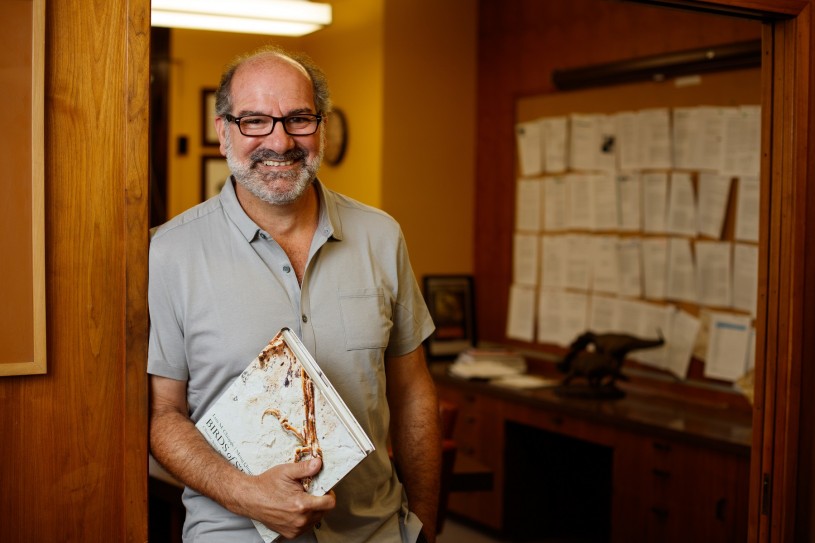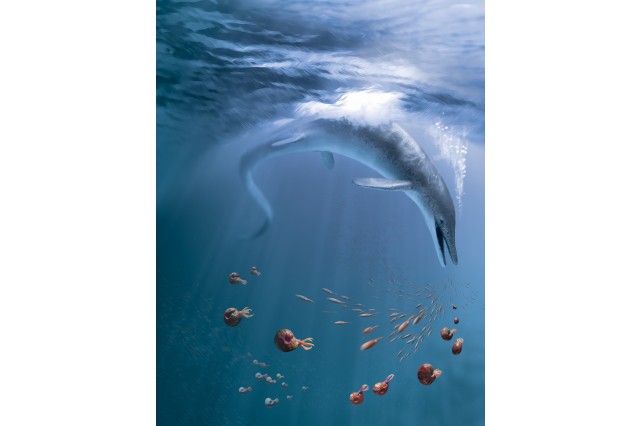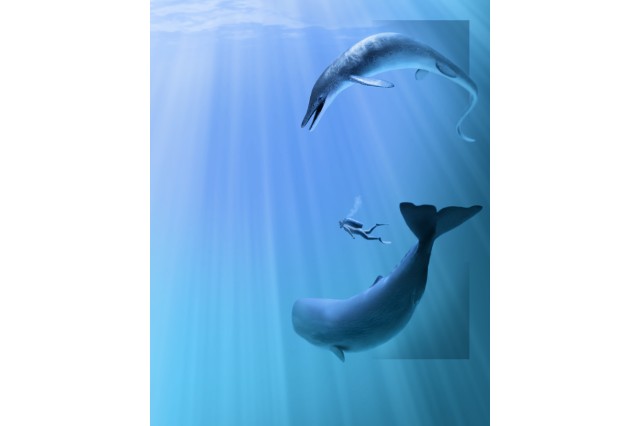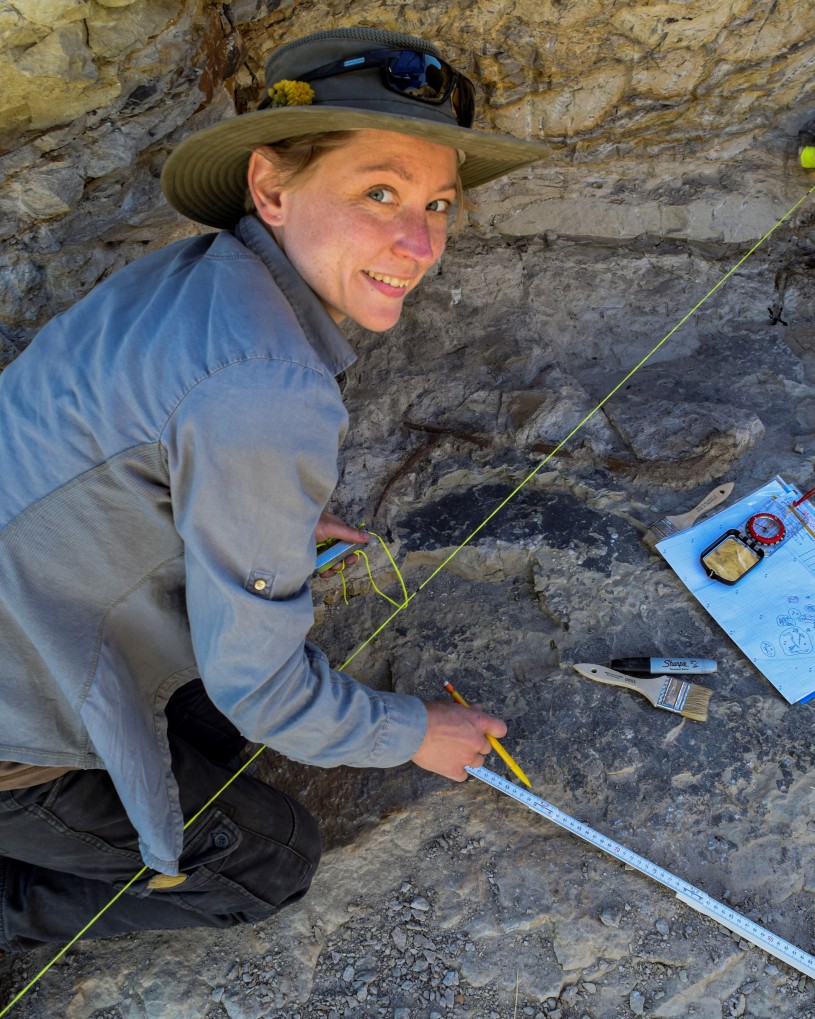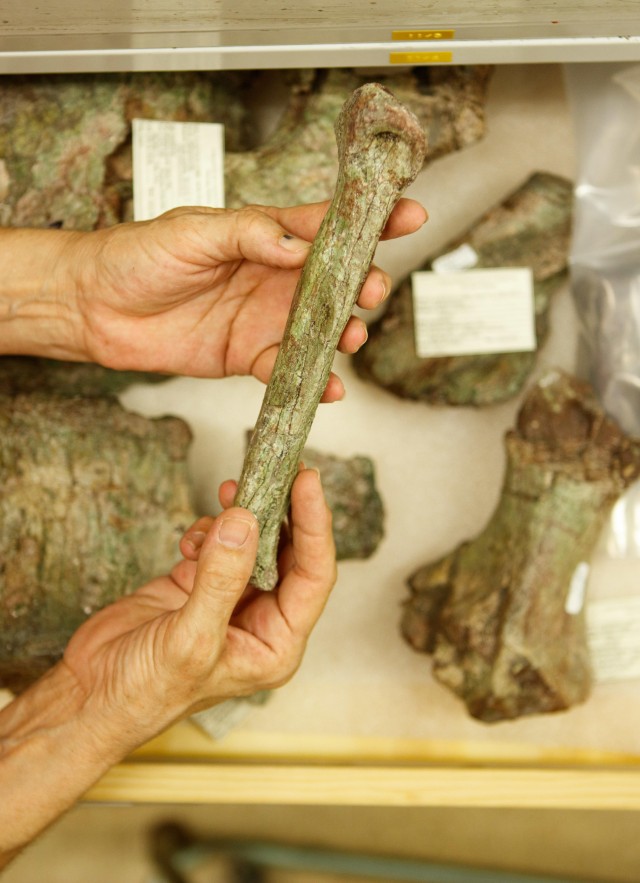
Welcome Back to the Dinosaur Institute Gazette!
Dear Friends,
I hope this new installment of the DIG finds you and your family well! For this issue, we want to showcase our world-class collection of Triassic ichthyosaurs, marine reptiles that lived some 240-250 million years ago. Ichthyosaurs are not dinosaurs, they are an offshoot of more primitive land reptiles that returned to the water and became masters of the oceans during the Age of Dinosaurs. They come in all sizes and shapes, from something looking like a small dolphin to enormous, whale-sized animals that could have reached 70 feet in length. And yes, at the Dinosaur Institute (DI), we have a great representation of them, particularly those that swam in ancient oceans during the Early-Middle Triassic (ca. 245 million years ago) covering what is today's northcentral Nevada. This outstanding collection--which includes some of the earliest known ichthyosaurs in the world--is the result of years of collaborative fieldwork with the University of Bonn in Germany.
In the next few sections, you'll learn more about ichthyosaurs, our collection, and how we work to amplify the message of the research that gets done daily at the Natural History Museum of Los Angeles County.
Thank you very much for your interest and support of the Dinosaur Institute!
Warm regards,
Dr. Luis Chiappe
Senior Vice President, Research and Collections
Gretchen Augustyn Director of the Dinosaur Institute
Earth’s First Giant
The two-meter skull of Cymbospondylus youngorum, a humongous new ichthyosaur species and Earth's first known giant creature, reveals how both these extinct marine reptiles and modern whales became giants. It is shedding new light on the rapid diversification of ichthyosaurs into behemoths of the Dinosaurian oceans, and helping us better understand the journey of modern cetaceans (whales and dolphins) to becoming the largest animals to ever inhabit the Earth.
While dinosaurs ruled the land, ichthyosaurs and other aquatic reptiles (that were emphatically not dinosaurs) ruled the waves, reaching similarly gargantuan sizes and species diversity. Evolving fins and hydrodynamic body-shapes seen in both fish and whales, ichthyosaurs swam the ancient oceans for nearly the entirety of the Age of Dinosaurs.
C. youngorum stalked the oceans some 246 million years ago, or only about three million years after the first ichthyosaurs got their fins wet, an amazingly short time to get this big. The elongated snout and conical teeth suggest that C. youngorum preyed on squid and fish, but its size meant that it could have hunted smaller and juvenile marine reptiles as well.
C. youngorum will be permanently housed at the Natural History Museum of Los Angeles County. Visit NHM.ORG/ichthyosaur to learn more.
Meet Stephanie Abramowicz, Scientific Illustrator of the DI
Stephanie is our very talented artist-in-residence. When she is not creating technical figures (detailed photographs, diagrams, etc.) for scientific publications, she is reconstructing ancient animals in vivid drawings or photographing specimens to activate our collections. Stephanie also joins our expeditions, where she not only plays an active role in collecting fossils, but also documents–through photography, video, and illustrations–-our work and the geologic context in which fossils are found.
The incredible images of Cymbospondylus youngorum were produced by Stephanie for media distribution around the publication of this gigantic ichthyosaur in the journal Science—one of the world’s leading scientific journals.
Blast from the Past
Nevada is home to magnificent Triassic ichthyosaurs but also some pretty awesome beer! We have been fortunate to receive support from the Great Basin Brewing Company to conduct our expeditions, prepare the resulting fossils, and bring them to L.A. on fancy delivery trucks. These photographs show our staff unloading ichthyosaurs–which are the fossils contained inside the plaster jackets–into the Museum’s loading dock after being transported in a Great Basin Brewing Company truck from Reno, Nevada.
In Case You Missed It...
Read previous issues of the Dinosaur Institute Gazette.
